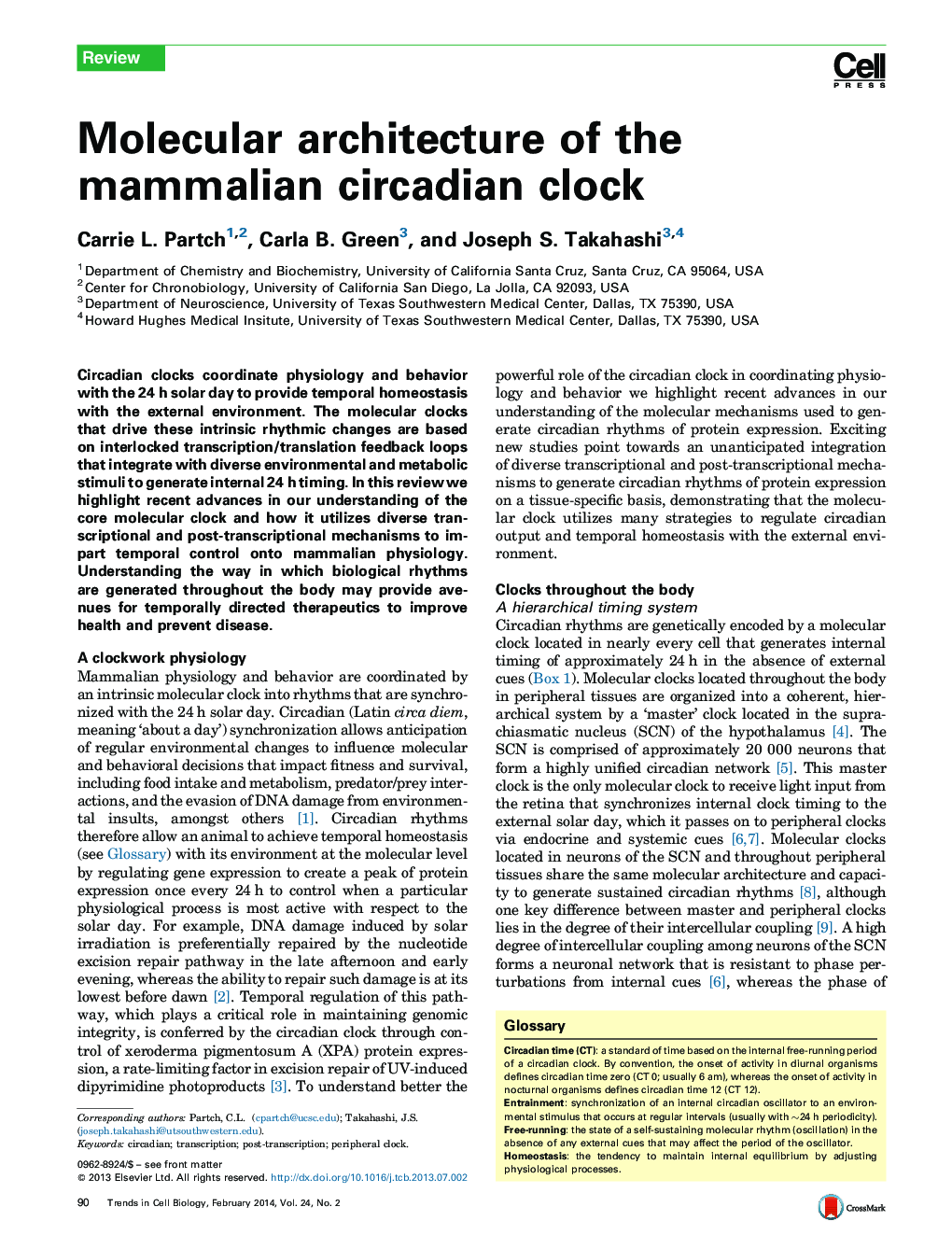| Article ID | Journal | Published Year | Pages | File Type |
|---|---|---|---|---|
| 2204436 | Trends in Cell Biology | 2014 | 10 Pages |
•The circadian clock generates molecular rhythms with 24 h periodicity.•Circadian control of physiology is distributed to peripheral tissues.•24 h timing arises from the ordered recruitment of clock proteins to promoters.•Many mechanisms are used to generate rhythmic output from the core molecular clock.•Clocks integrate with systemic cues to give flexibility to circadian physiology.
Circadian clocks coordinate physiology and behavior with the 24 h solar day to provide temporal homeostasis with the external environment. The molecular clocks that drive these intrinsic rhythmic changes are based on interlocked transcription/translation feedback loops that integrate with diverse environmental and metabolic stimuli to generate internal 24 h timing. In this review we highlight recent advances in our understanding of the core molecular clock and how it utilizes diverse transcriptional and post-transcriptional mechanisms to impart temporal control onto mammalian physiology. Understanding the way in which biological rhythms are generated throughout the body may provide avenues for temporally directed therapeutics to improve health and prevent disease.
